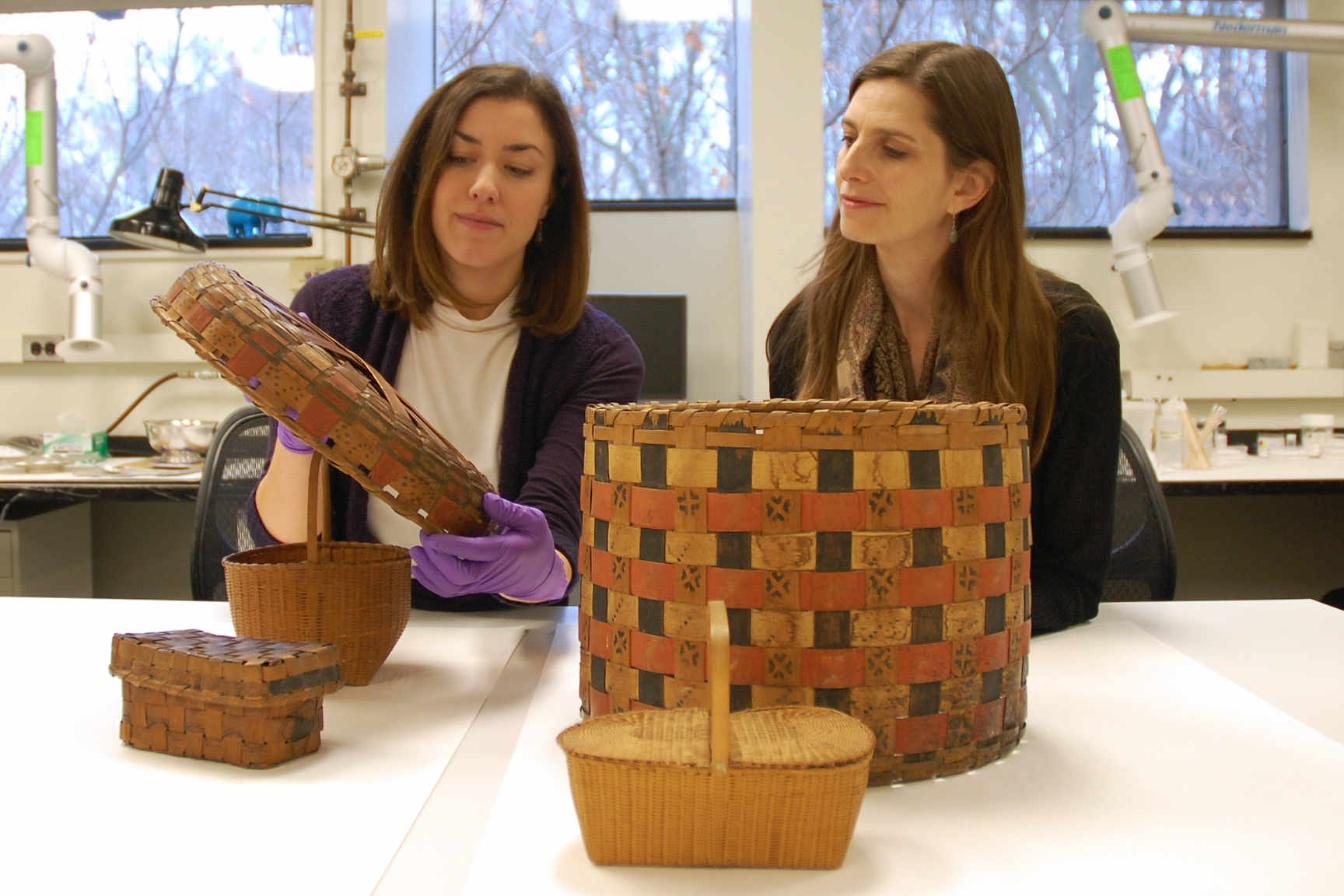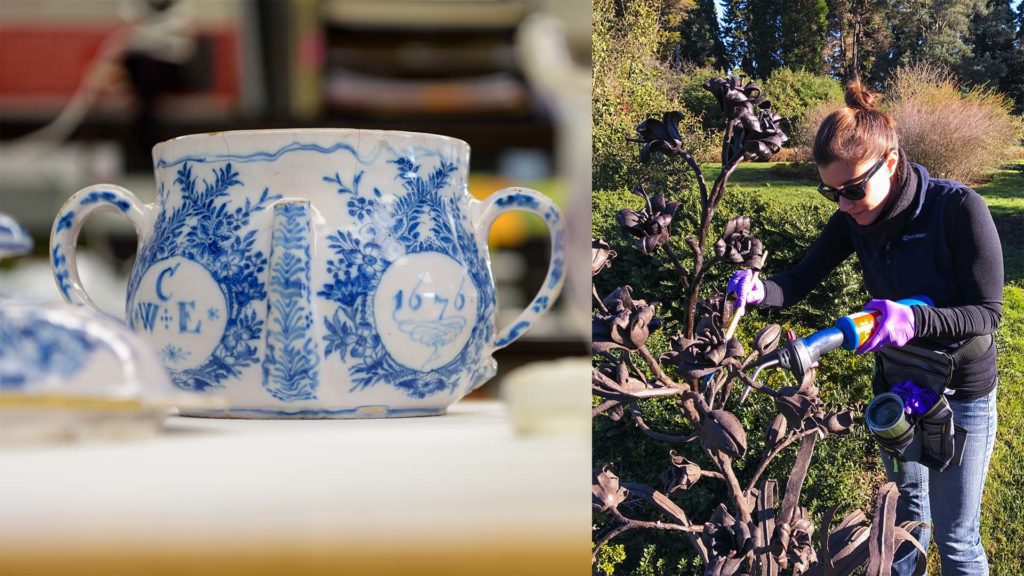
Image Caption: Winterthur objects conservators Lauren Fair (left) and Lara Kaplan (right) examining painted decorative baskets in the museum collection.
The Objects Conservation Lab is responsible for the care of more than 47,000 objects at Winterthur, including collection items in the house, galleries, and storage spaces, as well as exterior architectural elements and sculptures in the gardens and on the grounds. Objects vary in form, function, and complexity, from taxidermy birds to fully operational historic automobiles and everything in between.
Objects can be made of inorganic materials such as ceramics, glass, stone, and metal or they can be organic in nature, consisting of leather, ivory, bone, shell, horn, tortoiseshell, hair, feathers, plant materials, or plastic. Objects are often composite in construction, featuring several material types.
As diverse as the materials can be, the multilayered stories and values of an object can be even more so. What to one person may be a decorative basket displayed on a mantel may to another be the only surviving example of a rich cultural weaving tradition. Whenever possible, conservators seek input from various stakeholders to help guide treatment and preservation decisions in order to preserve both the tangible and intangible aspects of objects.

Image (left): Tin-glazed earthenware posset pot with missing spout, c. 1676, Winterthur Museum 2016.0034.015. Image (right): Lauren Fair performs annual maintenance to one of the iron lily sculptures in the Sundial Garden.